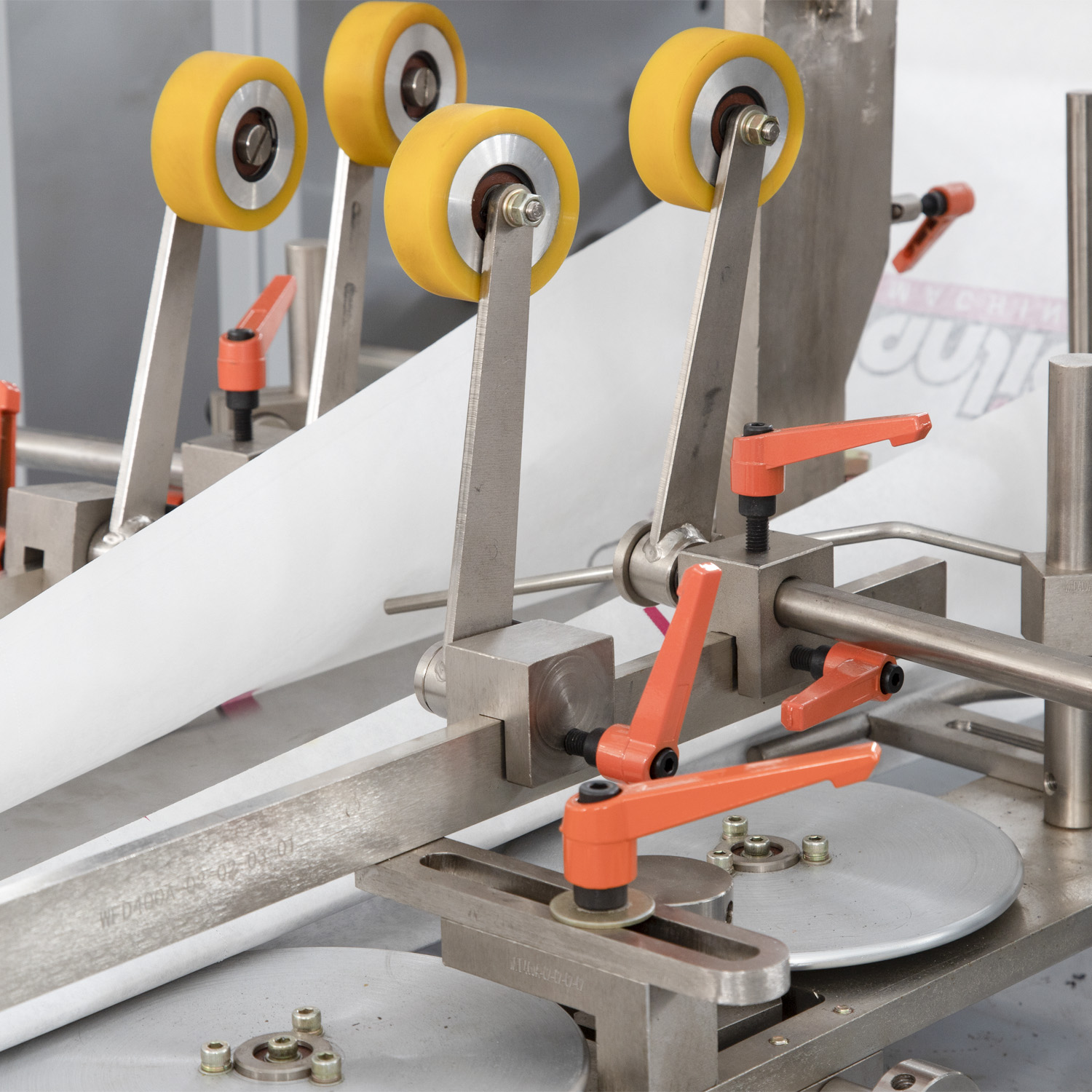
In today's fast-paced world, the demand for paper bags is on the rise due to increasing environmental consciousness. As a result, the demand for efficient and reliable paper bag machines is also growing. In this article, we will unravel the mechanics of a paper bag machine, exploring its structural components and the step-by-step process involved in producing paper bags. Additionally, we will delve into the advantages of using a paper bag machine for your business, highlighting the environmental benefits and cost-effectiveness. Furthermore, we will provide you with common troubleshooting and maintenance tips to ensure the smooth operation of your paper bag machine. So, let's dive into the fascinating world of paper bag machines and discover how they work.
Structural Components of a Paper Bag Machine
A paper bag machine is a complex piece of equipment that is responsible for producing the familiar bags we use for carrying groceries, shopping, and more. It consists of several structural components that work together to ensure the efficient and precise production of paper bags.
One of the key components of a paper bag machine is the feeding system. This system is responsible for supplying the machine with the necessary materials, such as rolls of paper and adhesive. The rolls of paper are unwound and fed into the machine, where they undergo various processes to transform them into paper bags. The adhesive is also supplied to ensure proper sealing and bonding of the bag's components.
Another important component is the cutting system. This system is responsible for accurately cutting the paper into the desired size and shape for the bags. It uses sharp blades or cutting dies to ensure clean and precise cuts. The cutting system is crucial in determining the final dimensions and appearance of the bags.
The folding and gluing system is another integral part of a paper bag machine. Once the paper has been cut, it needs to be folded and glued to form the shape of the bag. This system uses folding plates and glue applicators to fold and seal the edges of the paper, creating the familiar bottom and side folds of the bag. The folding and gluing system ensures that the bags are securely sealed and capable of carrying various items without tearing or breaking.
Additionally, a paper bag machine also includes a control system. This system is responsible for monitoring and controlling the different processes and components of the machine. It ensures that the machine operates smoothly and efficiently, making any necessary adjustments or corrections as needed. The control system also allows operators to set parameters, such as bag size and production speed, to meet specific requirements.
Step-by-Step Process of a Paper Bag Machine
The first step in the process is the material preparation. This involves selecting the appropriate type of paper, usually kraft paper, and ensuring that it is of the desired thickness and quality. The paper is then fed into the machine, where it goes through a series of rollers that flatten and smooth it out.
Once the paper is prepared, the next step is printing. This is where the design or logo of the paper bag is printed onto the paper. The machine uses high-quality ink and precision printing techniques to ensure that the prints are clear and vibrant. This step is crucial in creating visually appealing paper bags that can effectively promote a brand or product.
After printing, the paper goes through a cutting process. The machine is equipped with sharp blades that cut the paper into the desired size and shape of the bag. This step requires accuracy and precision to ensure that each bag is uniform and consistent in size.
Once the paper is cut, it moves on to the folding and gluing stage. The machine folds the paper along predetermined lines, creating the shape of the bag. It then applies glue to the designated areas, securing the folds and ensuring that the bag stays intact. This step is crucial in creating sturdy and durable paper bags that can withstand the weight of various items.
The final step in the process is the finishing touches. This includes adding handles, reinforcing the bottom of the bag, and any additional customization requested by the client. The machine can easily accommodate different handle types, such as twisted paper handles or rope handles, providing versatility in bag design.
Advantages of Using a Paper Bag Machine
One of the primary advantages of using a paper bag machine is its eco-friendliness. Unlike plastic bags that take hundreds of years to decompose, paper bags are biodegradable and can be recycled. By opting for paper bags, businesses contribute to reducing the amount of plastic waste and help protect the environment. With the growing awareness of the harmful effects of plastic on our ecosystem, using a paper bag machine is an ethical and sustainable choice.
Another advantage of using a paper bag machine is its versatility. These machines are capable of producing bags in various sizes, shapes, and designs. Whether it is a small boutique or a large supermarket, paper bag machines can cater to the specific needs of businesses. The ability to customize bags according to the brand's requirements allows businesses to create a unique identity and enhance their branding efforts. Additionally, paper bags can be printed with logos, slogans, and other marketing messages, serving as a cost-effective advertising tool.
Furthermore, paper bags are known for their strength and durability. Contrary to popular belief, paper bags can withstand heavy loads without tearing or breaking. This makes them an ideal choice for carrying groceries, clothing, books, and other items. The durability of paper bags also enhances the customer experience, as they can reuse the bags multiple times before disposing of them. This not only saves money for the customers but also promotes a culture of sustainability.
Common Troubleshooting and Maintenance Tips
When it comes to paper bag machines, like any other machinery, occasional troubleshooting and proper maintenance are essential to ensure their optimal performance and longevity. By following these common troubleshooting and maintenance tips, you can keep your paper bag machine running smoothly and efficiently.
Firstly, it is crucial to regularly inspect and clean the machine. Dust, debris, and paper waste can accumulate over time, leading to blockages and potential malfunctions. Use a soft brush or cloth to remove any dirt or dust from the machine's exterior and interior components. Additionally, it is recommended to lubricate the moving parts of the machine, such as gears and belts, to reduce friction and prevent wear and tear.
Secondly, pay close attention to the tension settings of the machine. Improper tension can result in wrinkled or uneven bags. Make sure the tension is properly adjusted for both the paper and handles to ensure a smooth and uniform bag production. Regularly check the tension settings and make necessary adjustments as needed.
Another important aspect of maintenance is the regular replacement of worn-out parts. Over time, certain components of the machine may wear down and affect its functionality. Keep an inventory of spare parts and replace them when necessary. This will help avoid unexpected breakdowns and production delays.
In case of any issues or malfunctions, it is vital to have a troubleshooting plan in place. Familiarize yourself with the machine's manual and understand its various functions and settings. This will enable you to identify and resolve common problems that may arise during operation. If the problem persists or seems more complex, contact the manufacturer or a professional technician for assistance.
In addition to regular maintenance, it is crucial to prioritize safety precautions. Always turn off the machine and disconnect it from the power source before performing any maintenance tasks. Wear appropriate protective gear, such as gloves and safety glasses, when handling the machine or working near its moving parts.













